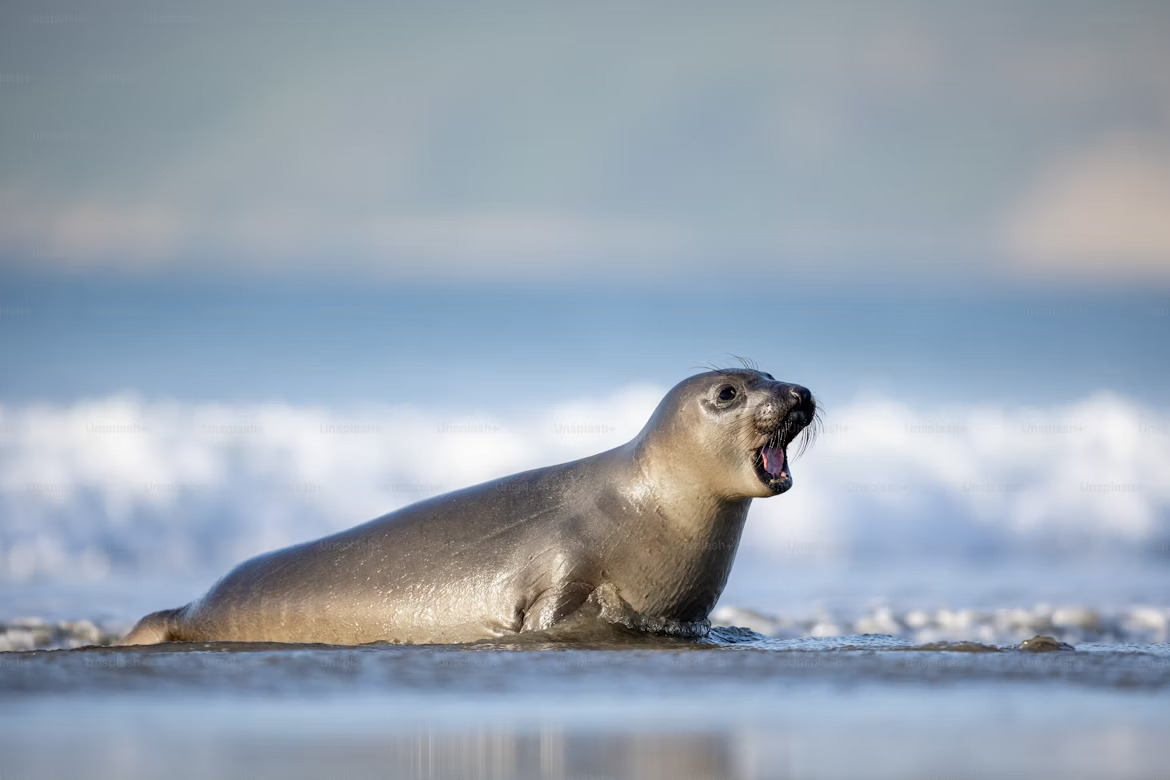Seals are some of the most charming and adaptable marine mammals in the world. With their sleek bodies, playful behavior, and incredible swimming abilities, seals capture the hearts of nature lovers everywhere. Despite their popularity, there’s much more to seals than just their adorable faces. Here are nine fascinating facts about seals that reveal their unique biology, behavior, and role in marine ecosystems.
1. Seals Are Marine Mammals, Not Fish
Seals belong to the group of mammals called pinnipeds, which means “fin-footed.” Unlike fish, seals breathe air through lungs, give birth to live young, and nurse their pups with milk. They spend much of their life in water but must come ashore or onto ice to rest, breed, and molt.
2. There Are Two Main Types of Seals: True Seals and Fur Seals
Seals are broadly divided into two groups:
- True seals (family Phocidae): These seals have no external ear flaps and use their hind flippers for propulsion in water. On land, they move by wriggling on their bellies because their hind flippers can’t rotate forward.
- Fur seals and sea lions (family Otariidae): These have visible external ears and can walk on land by rotating their hind flippers forward, giving them greater mobility on shore.
3. Seals Have Incredible Diving Abilities
Seals are exceptional divers. Some species can dive to depths of over 1,500 meters (about 5,000 feet) and hold their breath for more than an hour. Their bodies have special adaptations to manage oxygen efficiently, including large blood volumes and muscles that store oxygen.
Deep dives allow seals to hunt for fish, squid, and other prey that live far beneath the ocean’s surface.
4. Seals Use Whiskers to Detect Prey
Seals have highly sensitive whiskers called vibrissae that help them detect vibrations and movements in the water. This is especially useful in dark or murky waters where visibility is low.
Their whiskers can sense the wake left by fish, allowing seals to track and capture prey even in complete darkness.
5. Seals Communicate Through a Variety of Sounds
Seals are vocal animals that use a range of sounds to communicate. These include barks, growls, grunts, and even melodic calls. Communication plays an important role in mating, territory defense, and mother-pup bonding.
Different species have unique vocalizations. For example, the Weddell seal produces complex underwater songs during the breeding season.
6. Seal Pups Grow Quickly and Are Nursed Intensively
Seal mothers invest heavily in their pups. Seal pups are born with a thick, soft coat called lanugo, which they shed after a few weeks.
During nursing, which can last from a few days to several weeks depending on the species, mothers produce rich, fatty milk that helps pups grow rapidly. Some seal pups can double their weight in just a few days.
7. Many Seal Species Are Migratory
Some seal species undertake long migrations to reach breeding grounds or follow food sources. For example, gray seals migrate hundreds of miles along coastlines.
These migrations help seals find suitable habitats for pupping and take advantage of seasonal abundance of prey.
8. Seals Have Few Natural Predators, But They Face Human Threats
Natural predators of seals include orcas (killer whales), sharks, and occasionally polar bears. Despite these threats, many seal populations have been affected by human activities such as hunting, fishing net entanglement, pollution, and habitat disturbance.
Conservation efforts have helped many seal species recover, but ongoing threats require continued protection.
9. Seals Play a Vital Role in Marine Ecosystems
Seals are important mid-level predators in ocean food webs. By feeding on fish and invertebrates, they help regulate prey populations and maintain ecological balance.
Additionally, seals serve as prey for larger marine predators, linking different levels of the marine ecosystem.
Conclusion: The Amazing World of Seals
Seals are incredible marine mammals with fascinating adaptations and behaviors that allow them to thrive in challenging ocean environments. Their intelligence, agility, and social interactions make them a joy to observe and study.
By understanding and protecting seals, we contribute to the health of marine ecosystems that sustain countless species, including humans.

